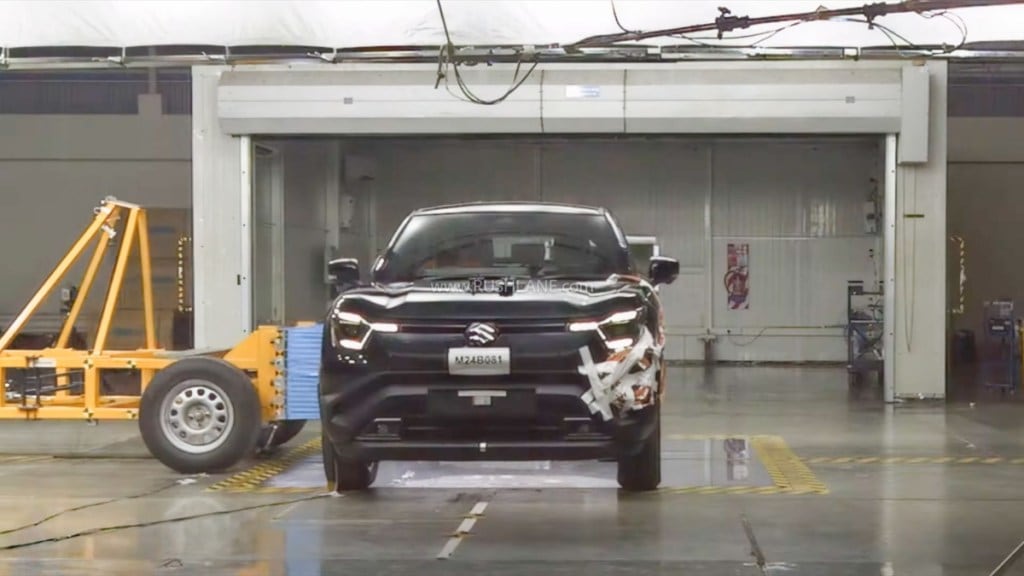Maruti Suzuki is gearing up to launch its first fully-electric vehicle in India in the form of e Vitara next month. After breaking cover at EICMA 2024 in November, the e Vitara made its India debut at the Bharat Mobility Global Expo 2025. Ahead of its official market launch, images of the electric SUV being crash tested have gone viral on the internet.
The images reveal the e Vitara’s safety being evaluated, however, reports indicate that these are internal crash tests conducted by Maruti Suzuki and not an external agency like Global NCAP or Bharat NCAP. In recent times, Maruti has started focusing on improving the overall safety standards of its lineup.
The most notable example is the new fourth-gen Dzire which was launched in November 2024. The latest iteration of the sub-4 metre sedan received a 5-star rating by Global NCAP, a first for any Maruti model. If crash tested by Global NCAP or Bharat NCAP, the e Vitara is expected to excel the safety evaluation since it will not just be on sale in India but several international markets including Europe.
Maruti Suzuki e Vitara: Safety features
In terms of safety features, the e Vitatra comes equipped with seven airbags, tyre pressure monitoring system (ADAS), ABS with EBD, EPB, AVAS, 360-degree camera, and front and rear parking sensors. The e Vitara will also be the first Maruti to boast of a Level 2 Advanced Driver Assistance System (ADAS) suite which consists of automatic emergency braking, lane keep assist, lane departure prevention, adaptive cruise control, rear cross-traffic alert, and more.
Maruti Suzuki e Vitara: Powertrain
The first model to be based on the Heartect-e platform, the Maruti e Vitara will be available with two battery packs – 49kWh and a 61kWh. The 49 kWh variant is available exclusively in 2WD, while the 61 kWh option is offered in both 2WD with a single motor and AWD with twin motors. The 49 kWh model generates 142 bhp and 189 Nm of torque, whereas the 61 kWh single-motor version delivers 172 bhp and 189 Nm.
The AWD configuration provides 181 bhp and 300 Nm of peak torque. Heartect-e platform, the system integrates an electric axle that combines the motor and inverter, along with lithium-iron-phosphate batteries.
Image Source: RushLane
